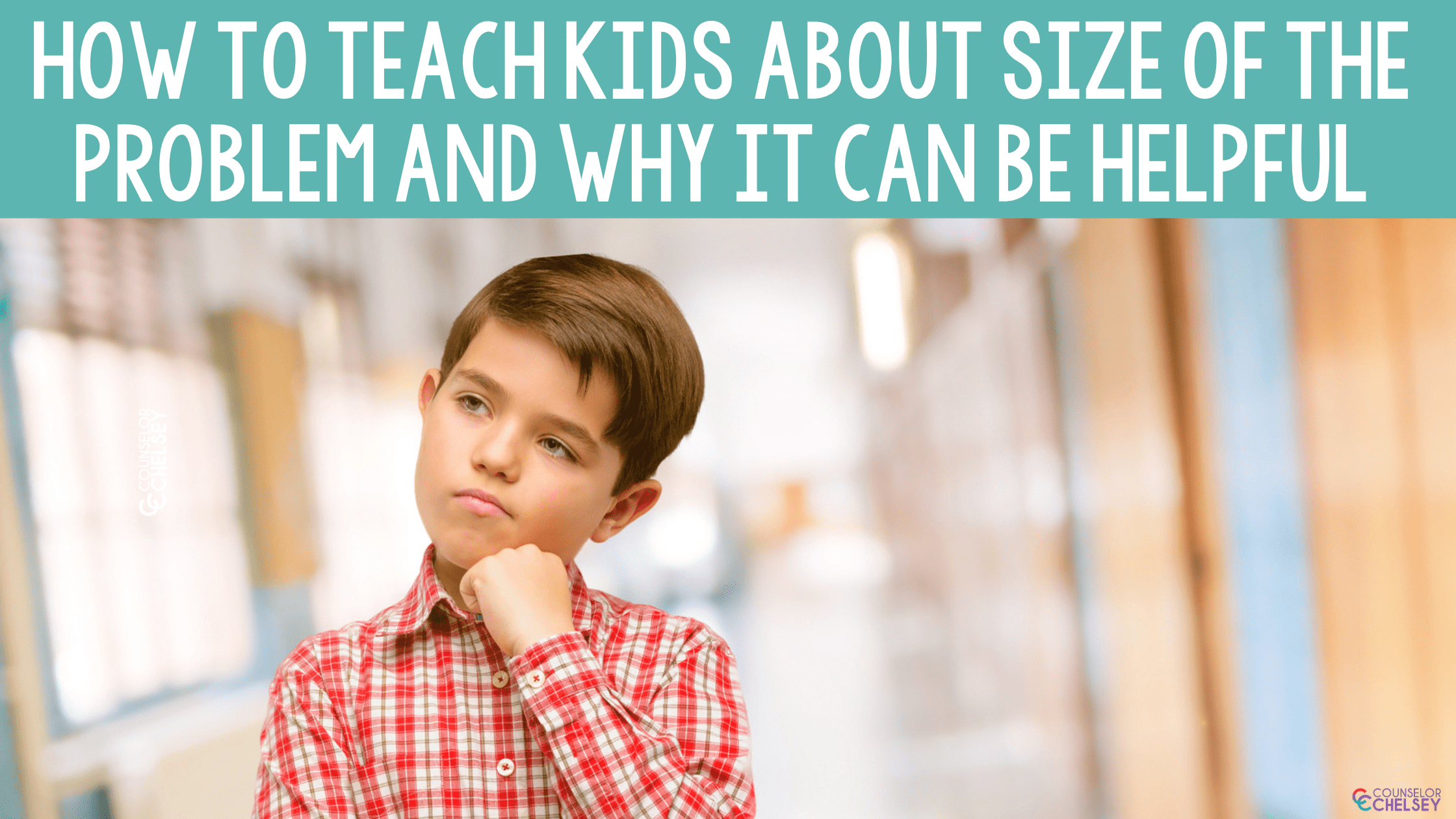How To Teach Kids About Size Of The Problem & Why It Can Be Helpful
Learning to solve problems is an important part of a child’s development. When they successfully work through their problems on their own, they can grow in their independence and feel more confident in their own abilities.
An important step in the problem solving process is deciding whether the issue is a small problem that can be solved independently, or a big problem that requires assistance. When kids can correctly evaluate the size of the problem, they are able to successfully move forward in the problem solving process.
Below, you’ll find more information about why this matters and how you can help your students get better at determining the size of the problem and responding appropriately.
Size of the problem: why it matters
When kids can identify the size of the problem, it’s easier for them to know what they should do next. Plus, it empowers them to solve some problems on their own.
If kids treat every problem like a big problem, they aren’t able to develop their problem solving skills. This can lead to increased dependence on others and even a lack of confidence. When kids don’t work through problems that they are capable of solving, they lose confidence in their ability to be a successful problem solver.
On the other hand, if kids don’t take big problems seriously, the problems can get even bigger and/or out of control. This may lead to safety issues, and also has the potential to negatively impact the child’s confidence. If they try to solve a problem that is beyond their capability, the child may begin to think that they are unable to solve any problems on their own.
Defining Big Problems And Small Problems
When helping kids learn to identify the size of the problem, I like to use 3 criteria. The following questions will guide kids as they determine whether or not it’s a big problem:
Is everyone safe?
Am I able to solve this problem?
Can this problem be solved quickly?
If the answer to each question is yes, then it’s a small problem. If not, it is a big problem that may require adult assistance.
Once you review this concept with your students, it’s time for them to practice identifying the size of the problem on their own.
First, start by giving them some examples and asking them to decide whether it’s a big problem or a small problem. Here are some ideas:
Your friend accidentally bumps into you in the hallway, but you’re not hurt.
You’re on a field trip and you get separated from your class.
There isn’t enough candy for you to have a piece.
You see someone who fell on the playground and can’t get up.
You can also ask your students to come up with their own examples of a small and big problem to share with the group/class.
Teaching kids how to respond appropriately
Once kids can identify the size of the problem, it will be easier to know what to do about it. If the issue is a big problem, it is a good idea to involve an adult. During your lessons, encourage students to identify adults that they can reach out to for help. When kids know who they can go to, it will be easier for them to do so in the moment.
If the issue is a small problem, there are many different strategies the student can use.
For younger kids, it can be helpful to give them some specific ideas of problem solving strategies that would be helpful such as walking away, ignoring the problem, asking the other person to stop, or finding something else to do.
Older students can explore a more thorough problem solving process using the four steps below:
Identify the problem
Identify multiple ways to actually solve the problem
Think about the consequences of each choice from step 2
Choose the best choice
During your lesson, you can give some scenarios of a problem/reaction and ask students to decide whether or not they think the size of the reaction matches the size of the problem.
This is also a great time to talk about the effects of having a reaction that doesn’t match the size of the problem. For example, if someone sees a fire in the school, but ignores it, what could happen? On the other hand, what are the effects of someone interrupting the teacher to let him/her know that their shoes are untied? These discussions help kids understand why it’s important to have a reaction that matches the size of the problem.
Resources For Teaching The Size Of The Problem:
Thankfully, there are many resources out there that can help your students better understand the concept of the size of the problem.
These activities will help your little learners better understand the difference between a big problem and a small problem!
One of my favorite resources (as always) are books! The fun thing about teaching the size of the problem is that you can talk about it using any story that has a problem in it. This allows for great conversation with kids about whether the problem is a big one or a small one. Then, you can talk to your students about how to respond appropriately to that problem. Keep reading the story to find out if the characters have the same ideas as your students!
If you’re looking for a more direct approach, here are some more books I love:
You can also find some ready-made activities in the Counselor Chelsey shop
I hope that these tips will equip you to help your students become confident problem solvers. If you are an educator who loves talking about all things SEL, make sure you sign up below to receive the weekly Counselor Chelsey e-mail! These e-mails are full of time-saving activities, ideas, and freebies that will make it easier for you to focus on the things you love.









